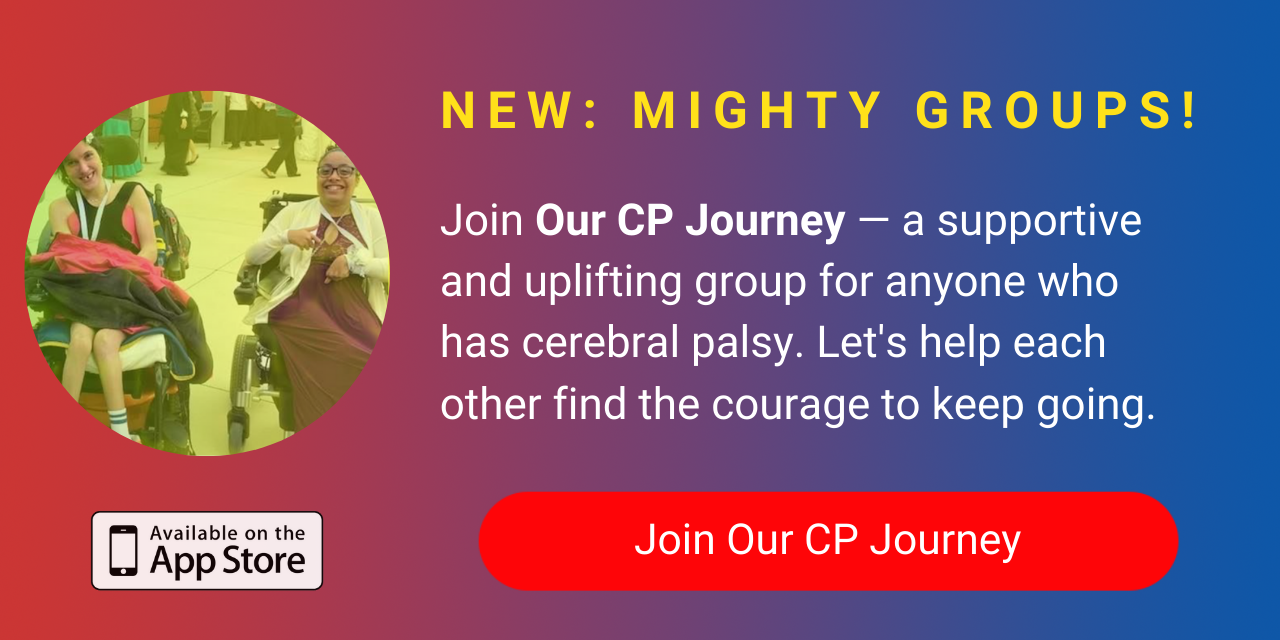We Need More Research Studies About Adults With Cerebral Palsy
When people think of cerebral palsy, they may think of it as a childhood condition. After all, about 8,000 babies are diagnosed with it annually, along with another 1,200 -1,500 toddlers. Across our nation, about 764,000 children and adults have some form of cerebral palsy, according to the organization Cerebral Palsy Guidance. For the most part, research about cerebral palsy focuses on children, but those children grow up to be adults with cerebral palsy.
Cerebral palsy is a non-progressive condition that affects movement, posture and balance. That is, the condition does not get worse as a child transitions to adulthood. Conditions associated with cerebral palsy can certainly develop, however, even if the brain injury never changes. Aging may happen faster in people with cerebral palsy because it can take five times as much energy for someone with cerebral palsy to complete a routine task. According to the Cerebral Palsy Foundation, about 17 million people worldwide have cerebral palsy. While cerebral palsy is diagnosed frequently between the ages of 2 and 5, it is possible to develop cerebral palsy later in life as a result of accident or trauma.
Children with cerebral palsy may receive educational and therapeutic services during childhood, such as speech and language, physical therapy and occupational therapy. Once these children age out of public schools between ages 18-21, those educational and support services often stop. Adulthood becomes a completely different world. Children with cerebral palsy transition into adulthood unaware of the changes that await them.
As a pre-schooler, I attended a special school for children with disabilities called the United Cerebral Palsy Center. Between the ages of 4 and 5, I attended small classes and received physical therapy several times a week. For the transition to public K-12, the Education for All Handicapped Children Act of 1975 (now known as IDEA) would pass in November, but I was not considered to be a child who needed an Individualized Education Plan or services in my regular classes because my disability did not have an educational impact on me, or at least that’s what the Child Study Team thought.
In high school, I took honors classes and got good grades regularly, but I needed support from my teachers, support that wasn’t written down in a plan anywhere. I have spastic diplegia cerebral palsy, which is in my legs predominantly. I walk with the classic, textbook scissor gait. But my hands were also affected. I needed extra time to handwrite my essay responses and solutions to math equations. Standard time just didn’t work for me. I could retrieve the information from my brain, but I needed more time to get the words and numbers down on paper.
My teachers found creative ways to give me time to perform at my best. They allowed me to work in empty classrooms for an extra period, work more at home, or work through lunch. I experienced success in high school because of how well my teachers worked with me. In turn, I always gave top effort in my studies.
Through college, I continued to work hard and advocate for my needs, which included negotiating that extra time I needed to get those words and numbers down on paper. This continued into graduate school, where an educational law exam took me four hours to complete, as did my special education comprehensive exam. Those efforts gave me the opportunity to become a full-time teacher and child study team member in the high school district where I had attended grades seven through 12. At age 24, I landed the dream teaching position that I have today, almost 26 years later. Over time, slowly and quietly, my needs as an adult with cerebral palsy changed from needing extra time to write to needing extra time to walk; yet, as my body changed, I couldn’t figure out what was happening.
At age 32, I went from walking independently my entire life to needing a rollator (4-wheel walker). At age 50, I started to notice progressive weakness in my arms and legs. I brushed off the changes to aging, not realizing a neurological storm in my spine was the culprit. On a cold February afternoon in 2020, I lost the ability to walk. This is why we need more research for adults with cerebral palsy.
A trip to the emergency room and two MRIs later, my doctors found the answer: spinal cord compression, spinal stenosis (arthritis), and a compressed disc. My neurologist said, “You have the back of a 70-year-old, and a fall could paralyze you.” The consequence? Cervical spine surgery to relieve the compression and open the nerve pathways in the spine. I have a second spine surgery scheduled for my lumbar spine, too. In addition to inserting rods and screws to open up space in between the vertebrae, my neurologist is doing several laminectomies to relieve the pressure on my spine and restore strength through the open neural pathways. During my follow-up visit, my neurologist said he wants to know why I developed such severe spinal cord compression. This is why we need more research for adults with cerebral palsy.
I’m excited about my upcoming spinal cord surgery. I’m hoping more research can be done for adults with cerebral palsy. Every year, children will begin the transition to adulthood. Knowing what to expect, knowing how to get help before more severe neurological damage happens, and knowing how to care for the body properly so as to not hurt present or future function are vital keys for people with cerebral palsy and people with research interests about cerebral palsy. As an adult with cerebral palsy, I support research efforts to help our children so they can grow up to be healthy adults with cerebral palsy.
Getty image by Metamorworks.


